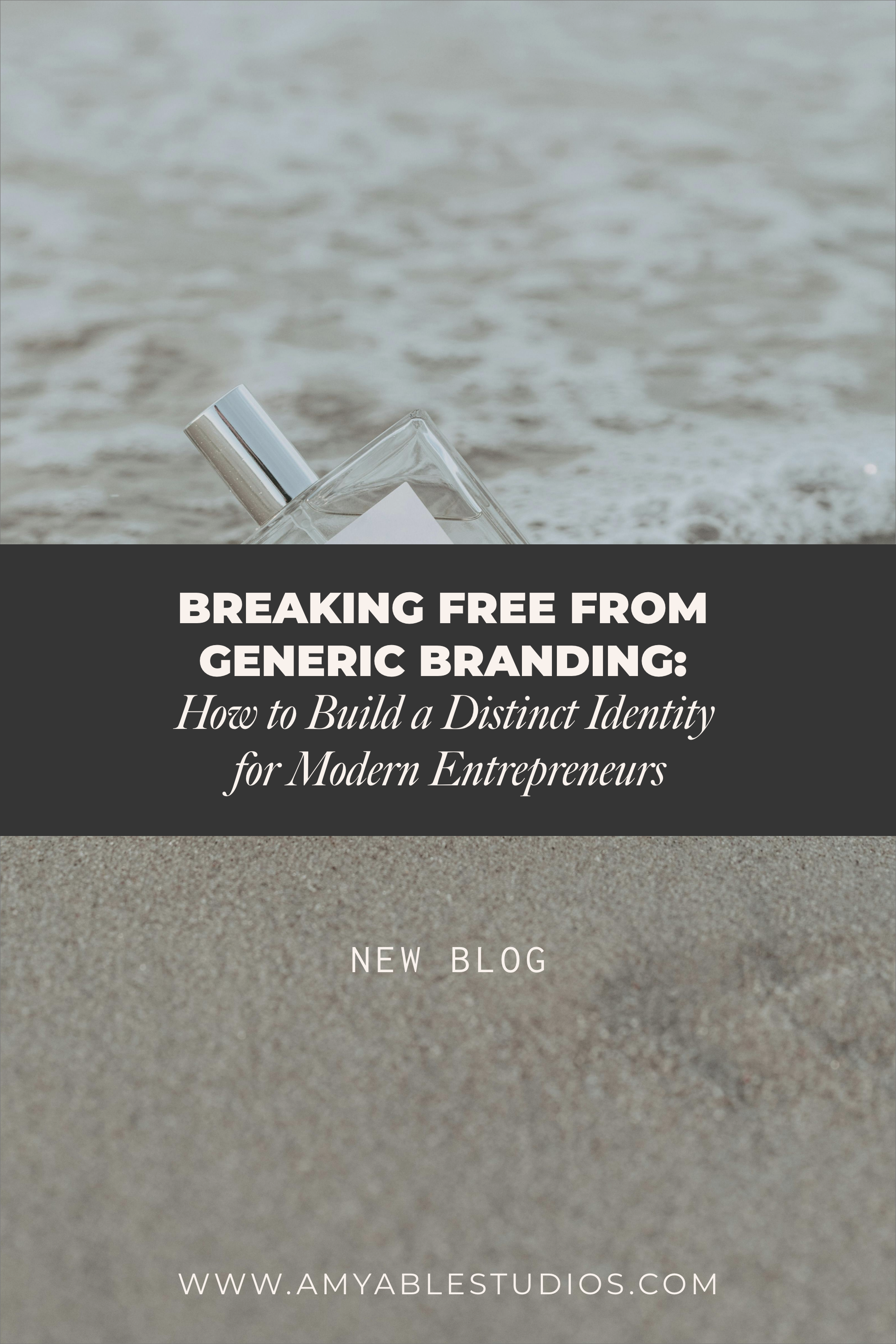Breaking Free from Generic Branding: How to Build a Distinct Identity for Modern Entrepreneurs
The Challenge of Standing Out
Entrepreneurs today face an ongoing tension: the need to differentiate while maintaining credibility. For those with family businesses or established industry ties, the challenge is even greater—how do you honor legacy without being defined by it?
Many end up with branding that is functional but forgettable. They play it safe, relying on conventional design choices, familiar messaging, and surface-level storytelling. The result? A brand that blends in rather than stands out.
A strong brand isn’t about being loud for the sake of visibility—it’s about clarity, precision, and a well-defined point of view. If your brand isn’t distinct, it won’t be remembered. And in a competitive market, that’s a risk no business can afford to take.
Why Generic Branding Fails
A brand that lacks definition doesn’t just struggle to gain traction—it actively repels opportunity.
The Risks of Blending In
No differentiation. If your visual identity and messaging feel interchangeable with competitors, customers have no reason to choose you.
Weakened brand equity. A generic brand makes it difficult to establish pricing power or command loyalty.
Inconsistent messaging. Without a strong foundation, brand communication often becomes reactive rather than strategic.
Limited audience connection. People engage with brands that feel intentional and human. A watered-down identity doesn’t inspire confidence or trust.
If your brand lacks clarity, it won’t just struggle to attract customers—it will struggle to keep them.
Step 1: Audit Your Brand DNA
A brand is only as strong as its foundation. Before making changes, assess what’s working and what isn’t.
Where to Focus
Visual Identity: Does your logo, color palette, and typography feel distinct and aligned with your vision? Or is it simply “on trend”?
Messaging: Can you articulate your brand’s positioning in a sentence? If not, your audience likely can’t either.
Customer Perception: How does your audience describe your brand? If their responses feel generic, your branding likely does too.
Competitive Landscape: If your brand name were removed, would people still recognize it as yours?
What to Do Next
Conduct a brand audit. Identify inconsistencies. Look at your brand through the lens of an outsider and ask, “Would I remember this?”
Step 2: Infuse Your Personality
A brand without a point of view is forgettable. The strongest brands feel like an extension of the people behind them.
Ways to Build a More Distinct Brand Narrative
Clarify Your Perspective. What does your brand stand for? Not in a generic “quality and service” way—but in a way that challenges assumptions or redefines a category.
Own Your Story. If your brand has roots in a family business, what’s different about how you approach it? If you’re building something from the ground up, what motivated you to do it?
Speak with Conviction. A brand should sound like it has something to say. If your messaging feels like it could belong to anyone, it needs refining.
What to Do Next
Identify the defining elements of your brand story and incorporate them into your messaging at every touchpoint.
Step 3: Design with Intention
Branding is more than aesthetics—it’s a visual strategy. Every design decision should reinforce what your brand stands for.
What to Evaluate
Logo: Does it reflect the energy and positioning of your brand, or does it simply “look nice”?
Color & Typography: Are they intentional choices that evoke a specific feeling, or are they standard selections from a trend-driven palette?
Packaging & Digital Presence: Does every brand touchpoint feel like an extension of the same identity?
What to Do Next
If your brand identity feels generic or lacks cohesion, it’s time for a refinement—or a full rebrand.
Case Study: The Power of Strategic Rebranding
A beauty entrepreneur we worked with had a product line that was high-quality but struggled with visibility. The branding was neutral, safe, and indistinguishable from competitors.
Through strategic rebranding, we refined their positioning, shifted their visual identity to align with a more premium aesthetic, and developed a messaging framework that clearly articulated their value.
The result? Increased engagement, stronger brand recognition, and a loyal customer base that connected with the brand on a deeper level.
Branding isn’t just about looking polished—it’s about building a presence that people remember.
Conclusion: A Brand That Stands for Something Stands Out
A strong brand isn’t built by following trends or playing it safe. It’s built by making deliberate choices—about how you show up, what you stand for, and the way you communicate your value.
If your branding doesn’t feel bold, intentional, or aligned with your long-term vision, it’s time to change that.
At Amyable Studios, we help entrepreneurs create brands that command attention, foster loyalty, and drive growth. If you’re ready to refine your brand and stand out with confidence, let’s start the conversation.























